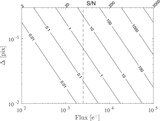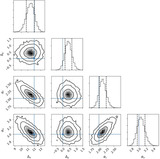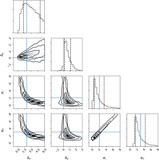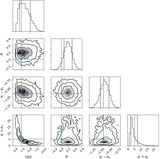Image Details
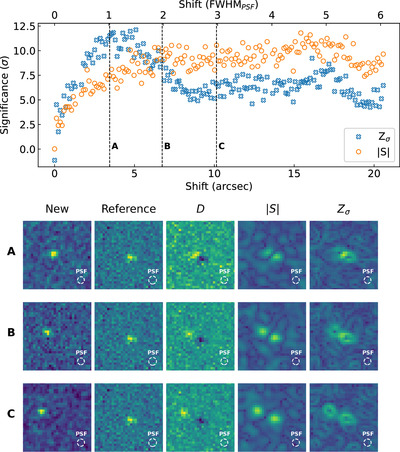
Caption: Figure 12.
Upper panel: a comparison of Z σ (blue empty crosses) and ∣S∣ (orange empty circles) for a series of images capturing a moving source (asteroid 3832, Shapiro). The images are taken sequentially within 1 hr during the same night. The first image serves as the reference image. Each sequential new image thus represents a source moving away from its initial position. The distance that the asteroid has crossed since the time of the reference image is shown as a shift in arcseconds and in the FWHM of P r . Three selected measurements, where the shift is closest to a multiple of FWHMPSF, are marked by gray dashed vertical lines and designated by the letters A, B, and C. Lower panel: for each of the three marked measurements (A, B, C), a set of 30 × 30 pix cutouts of the new, reference, D, ∣S∣, and Z σ images around the initial asteroid position are shown. For the ∣S∣ and Z σ cutouts, the minimum and maximum values of the color map are fixed to −5σ and 13σ, respectively. For each cutout the dashed circle shows the FWHM of the PSF of the respective image. For ∣S∣ and Z σ , the shown PSF is that of the D image. Within a shift of ≲2 FWHMPSF, Z σ > ∣S∣. Once the asteroid positions in the reference and new images are clearly separated, ∣S∣ overtakes Z σ .
Copyright and Terms & Conditions
© 2024. The Author(s). Published by the American Astronomical Society.


